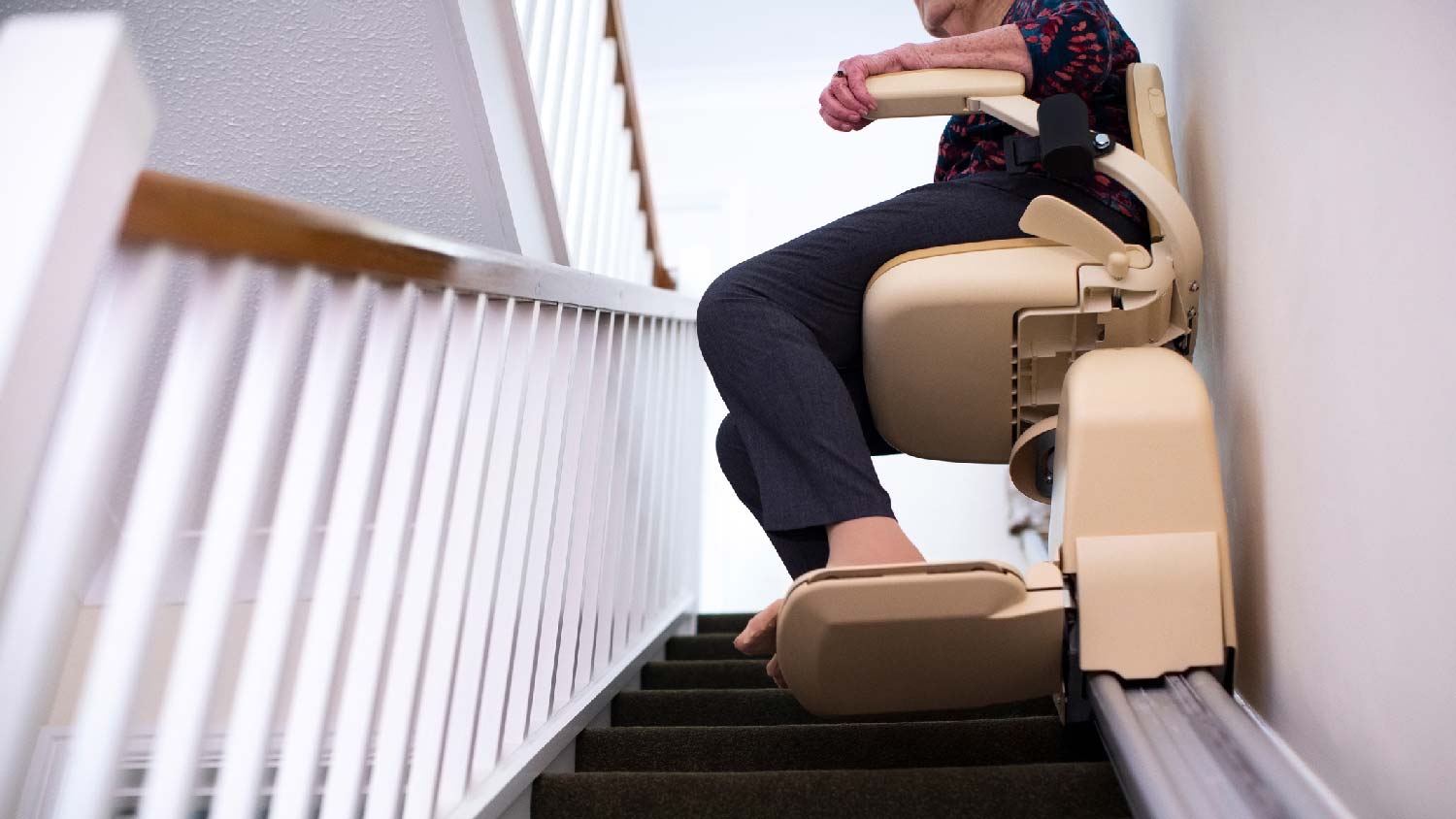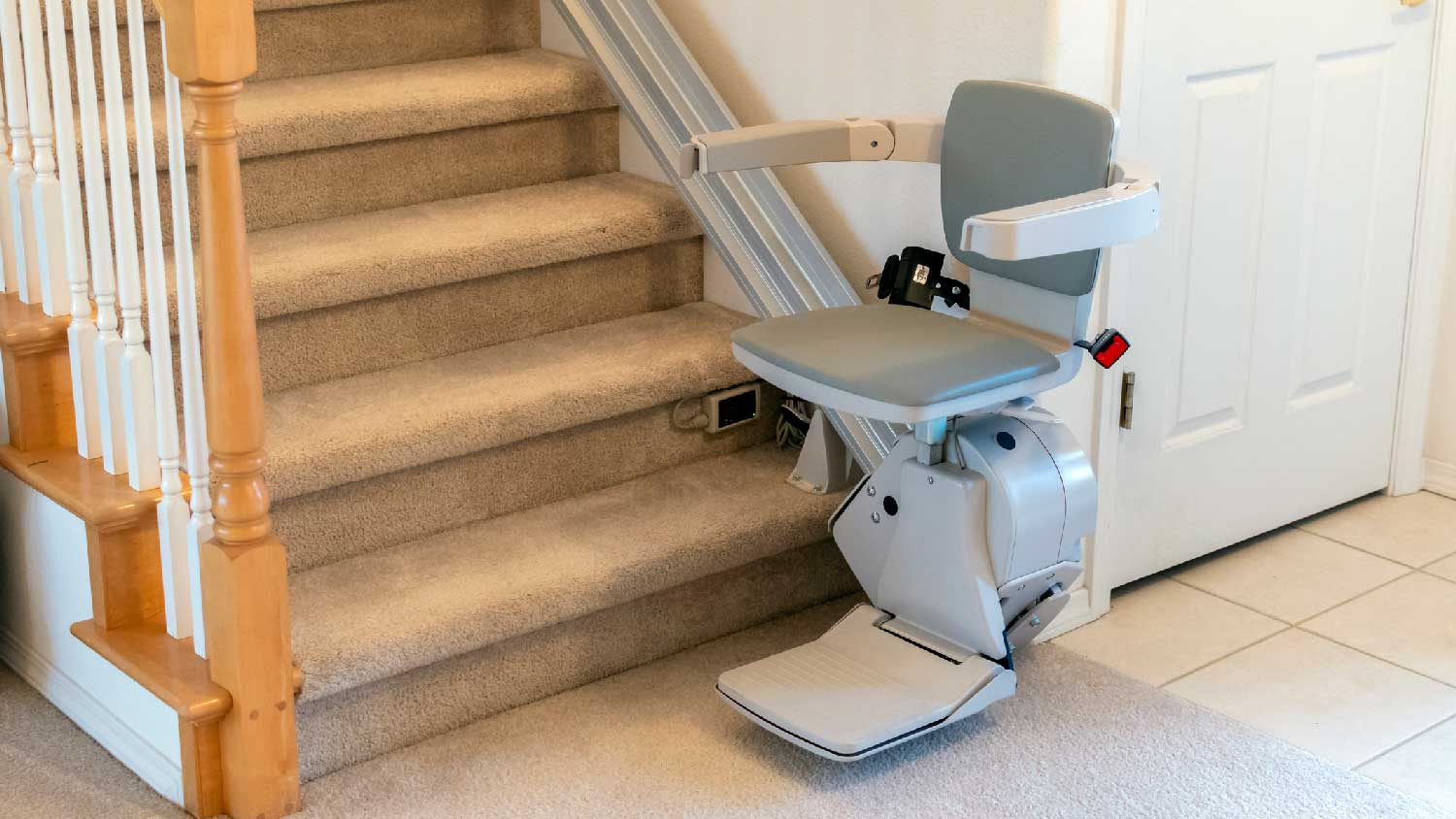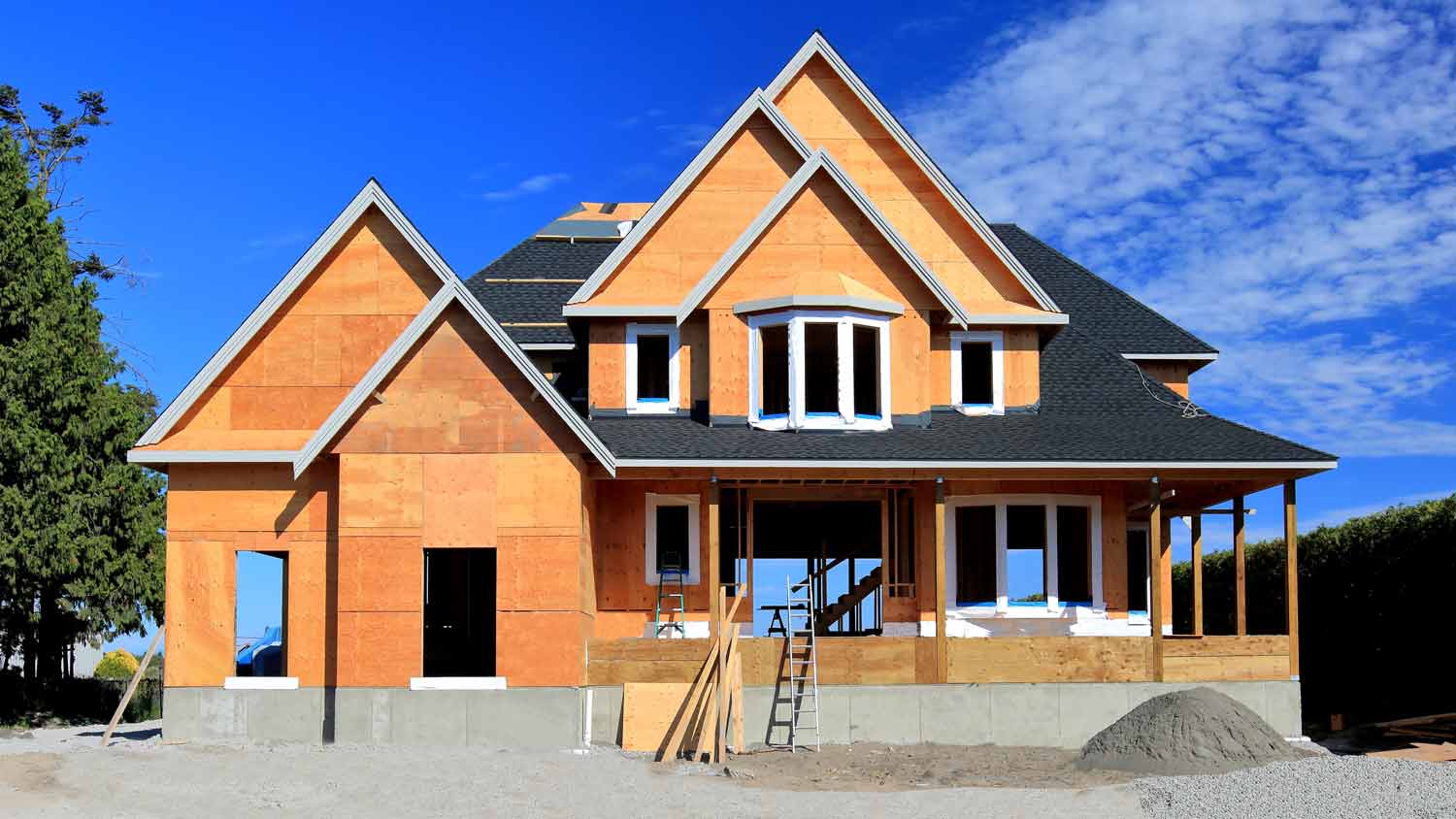
Looking to turn your yard into a hockey or ice skating paradise this winter? Use this backyard ice rink cost guide to see what the installation will total.
Comparing your lift purchasing options, one step at a time


Most companies only rent basic straight stair lifts.
Buying allows you to customize your lift with features and design.
Renting makes the most financial sense if you need a stair lift for less than six months.
A stair lift is a great mobility solution for anyone who needs support getting up and down the stairs. Some individuals may need a stair lift for a short period of time, while others may use it for years to come. When considering renting vs. buying a stair lift, it’s important to weigh a few factors, like your budget, how long you’ll need mobility assistance, and the layout of your home.
Keep reading to find out which is the best option for your situation.
If a stair lift is improperly installed, the homeowner risks injury and/or damage to the stair lift. It's highly recommended to contact a pro to ensure the installation is done properly.
Most stair lift companies offer the option to buy or rent a stair lift, depending on your situation. Those with temporary mobility issues should rent a stair lift, while others who want to age in place will find better ROI by buying outright.
Renting typically lasts a few months to a year and may include other benefits like free maintenance or de-installation. But you can usually only rent straight stair lifts without any customizations. The cost of buying a stair lift is higher and may not come with maintenance, but it offers more flexibility in design and features.
Renting a stair lift is more cost-effective if you need a short-term solution, like after a hip replacement or if an elderly loved one is living with you temporarily.
| Pros | Cons |
|---|---|
| Good for temporary support | No customization options |
| Quick installation | Expensive if needed for long-term |
| Flexible terms | Limited features |
Best for:
Those recovering from an injury.
If you plan on moving from your home soon.
For temporary support for live-in guests.
You can rent a stair lift for between $300 and $500 per month. So, if you only need mobility support for six months (the typical length of a rental contract), that cost is between $1,800 and $3,000—which could be significantly cheaper than purchasing outright.
Plus, renting gives you a flexible solution if you need to house an aging adult for a short period or if you’re recovering from an injury. Rather than paying outright for a stair lift and then de-installing it a few months later when you no longer need it, renting can help simplify and streamline the process.
Depending on your contract terms, your contract may include installation, de-installation, and maintenance, so you know exactly how much you’ll pay for a set period. And if you need to extend it, you may be able to pay month-to-month until you’re ready to take the next step and tackle the stairs on your own.
Renting is only an option if you have a standard stair set-up, meaning no spiral staircases or landings. Companies typically only rent their most basic lifts and significantly limit customization options, as someone else will rent the product after you finish it. So, if your set-up is even slightly more complex than a basic stairway, renting probably isn’t an option.
And while renting can be cost-effective, it doesn’t make financial sense for every situation. If you’re unsure how long you need a stair lift in your home (especially if you think it’s over 6+ months) and have a straightforward staircase, buying may be better in the long run.

While buying can range anywhere from $3,500 to $10,000 on average, there are a handful of perks that may make the added cost worth it to you.
| Pros | Cons |
|---|---|
| Works with all staircases | Higher upfront cost |
| Ability to customize | No repair support |
| Possibility to sell in the future | No maintenance support |
Best for:
Complex or curved staircases
Aging in place
If you want to customize your lift
When buying a stair lift, you can customize it to your personal and home needs — something typically unavailable when renting. Companies can outfit a stair lift with anything from padded seats to higher weight limits based on your needs. So, while the upfront cost is likely greater, the ability to add features and upgrade designs is almost guaranteed to enhance your overall value.
Plus, owning it outright gives you the ability to sell it back to the company or to an individual down the road. Depending on where you live and if there’s a high population of people who want to age in place, you could even keep it in your home as an added selling point.
The biggest con of buying a stair lift is the price tag. The costs start at $2,000 for a straight model, and the cost of a curved stair lift starts at $9,500 for a curved model. More complex configurations can reach all the way up to $25,000. And in some cases, that cost may not even include installation.
And once you own the system, you’re also in charge of repairs and maintenance. If you’re not handy enough to tackle these tasks on your own, or if you’re purchasing for an elderly family member who lives by themselves, the time and costs for these to-do list items can add up. You should expect to spend an additional couple hundred bucks on your annual cost of owning a stair lift.

Most companies only rent basic straight stair lifts. If you want to access any type of customization or need a curved stair lift instead of a straight one, buying is likely your only option.
In general, renting makes more financial sense if you only need the lift for six months or less. If you need it for longer, you may pay more to rent the lift than if you bought it outright, especially if you’re willing to purchase a pre-owned option.
If you rent a stair lift, you likely can’t do any repairs on the product yourself per your contract terms. You’ll have to pay out-of-pocket to the company if anything goes wrong. By buying your stair lift, you’re in complete control of repairs and can tackle stair lift troubleshooting on your own time.
Some companies include maintenance services as part of the contract, which can be a big selling point. But if they don’t, you’ll have to hire a stair lift pro to do it for you. If you bought your product, you can tackle it yourself or hire someone as well.
For both options, the company you get the stair lift from will likely be the one who installs your stair lift. Sometimes, this price is included in your rental contract. If this is the case for the company you choose to work with, it can be a big money-saving win.
Renting is a more sustainable option as it allows multiple families to use the product throughout its lifetime. This is especially true for companies that include maintenance and repairs as part of the rental contract because it means your lift is guaranteed to operate efficiently for as long as possible.
Buying is the only option if you want to be able to resell it in the future. Many companies will repurchase the stair lift for a fraction of what you paid, making earning some money back on your investment even more effortless.
From average costs to expert advice, get all the answers you need to get your job done.

Looking to turn your yard into a hockey or ice skating paradise this winter? Use this backyard ice rink cost guide to see what the installation will total.

Home elevator costs depend on the size and type of lift, if it needs retrofitting, and the number of floors. Our guide outlines all residential elevator costs.

The cost to frame a house can vary depending on the size of your home, the structure you’re building, and your materials. Keep reading to learn how much framing your house might cost.

Curved staircase chair lifts can enhance your home’s safety and accessibility. Use this guide to learn how much they cost to install based on factors like staircase size and lift type.

Find out how much a shaftless home elevator costs, including additional factors that can drive up the overall installation price.

What is included in framing a house? This process involves framing the floors, walls, and roof. Contractors must follow a detailed building plan for success.